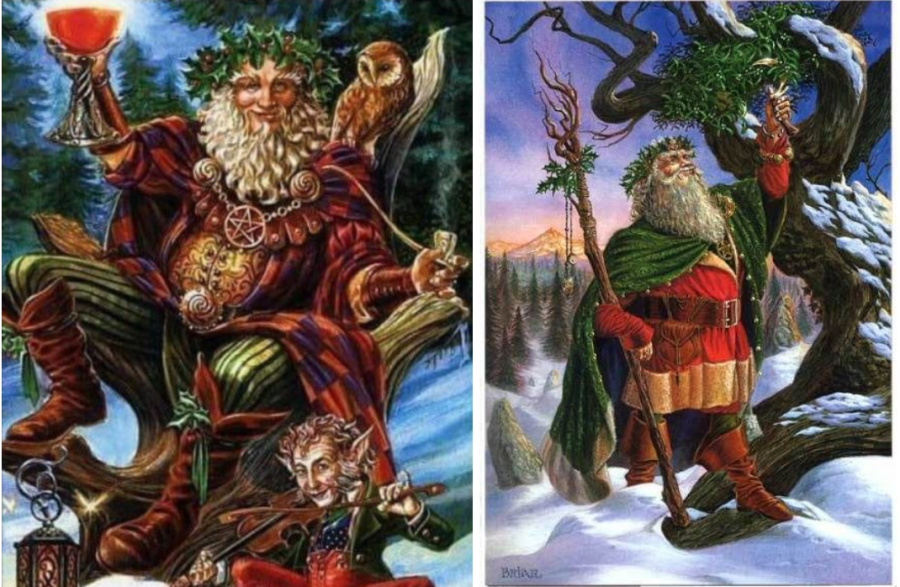Origins of Christmas Traditions
Have you ever wondered what started the holiday traditions you know and love? Many modern Christmas traditions actually originated as ancient Roman or Nordic practices. Only three traditions are described at length here, but if they spark your curiosity, articles describing various ancient traditions are widely available online.
How Lovely Are Your Branches (or: Here Comes the Sun)
Traditions of using evergreens to decorate homes originated in ancient Egypt, Rome, and northern Europe. Many ancient cultures would hang spruce, pine, and fir boughs above windows and doors to keep away witches, ghosts, evil spirits, and illness. In addition, many of these cultures believed that winter occurs because the sun god has become weak or ill, so they celebrated the winter solstice (the longest night of the year) because it meant the sun god would soon regain his strength. Evergreens were used because they reminded people of the green months ahead. The ancient Egyptians decorated their homes with green palm leaves on the winter solstice to symbolize the return of Ra, the sun god, and the triumph of life over death. When the Romans celebrated Saturnalia, the feast of the god of agriculture, they used evergreens to represent the coming spring, which would bring with it green and fruitful fields. Though not much is known about the Druids, ancient Celtic priests, we do know that they celebrated the winter solstice by placing evergreen boughs in their temples as a symbol of everlasting life. The use of evergreens eventually made its way to Germany, where it morphed into a tradition of candlelit Christmas trees. However, when Christmas trees were brought to America, Americans were slow to accept them. As late as the 1840s, most Americans regarded Christmas trees as pagan symbols. In New England, this was likely due to leftover Puritan influences. The Puritans shunned any celebration of Christmas that was not a church service. William Bradford, the Pilgrim’s second governor, even denounced Christmas trees as “pagan mockery.” However, evergreens have since caught on, and Christmas trees have become a widely accepted holiday tradition.
Have Yourself a Merry Little Yuletide (or: It’s Beginning to Look a Lot Like Yuletide)
The burning of the Yule log was originally a Nordic tradition. Members of a family would honor the winter solstice by searching the woods for the mightiest oak tree they could find. The family would then bring the huge log back to their home, where they would burn part of it every evening for twelve nights in celebration of life and prosperity. The burning log also represented the return of the sun. The Yule log had many superstitions attached to it. One such belief held that the log had to catch fire on the first attempt to light it, or else bad luck would fall on the entire family. Another stated that the remains of each year’s Yule log had to be saved until the next year’s ceremony for good luck. Sometimes, the ashes of the log were stored under a bed to protect the house from evil spirits and lightning strikes. Now, instead of burning a real log, some people pull up YouTube videos of Yule logs for ambiance during Christmas parties or other celebrations. The log has also become a dessert– in many places, a Yule log is a traditional log-shaped cake.
You Better Not Pout, I’m Telling You Why… Odin Is Coming to Town?
Though leaving out cookies and milk for Santa Claus may seem like a modern Christmas tradition, this practice actually dates back to ancient Norse mythology. Odin, one of the most important Norse gods, was said to ride an eight-legged horse named Sleipnir. During the Yule season, children would leave food out for Sleipnir, hoping that Odin would stop by on his travels and leave gifts in return. In the modern tradition, Odin is replaced by Santa, and the reindeer stand in for Sleipnir. (Funnily enough, before Rudolph, there was one reindeer for each of Sleipnir’s legs!)
Caroline Reichard ‘21, Staff Writer









